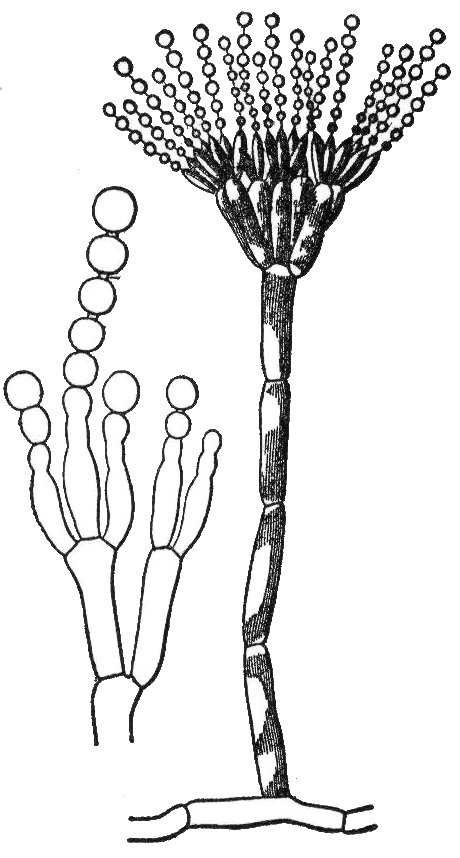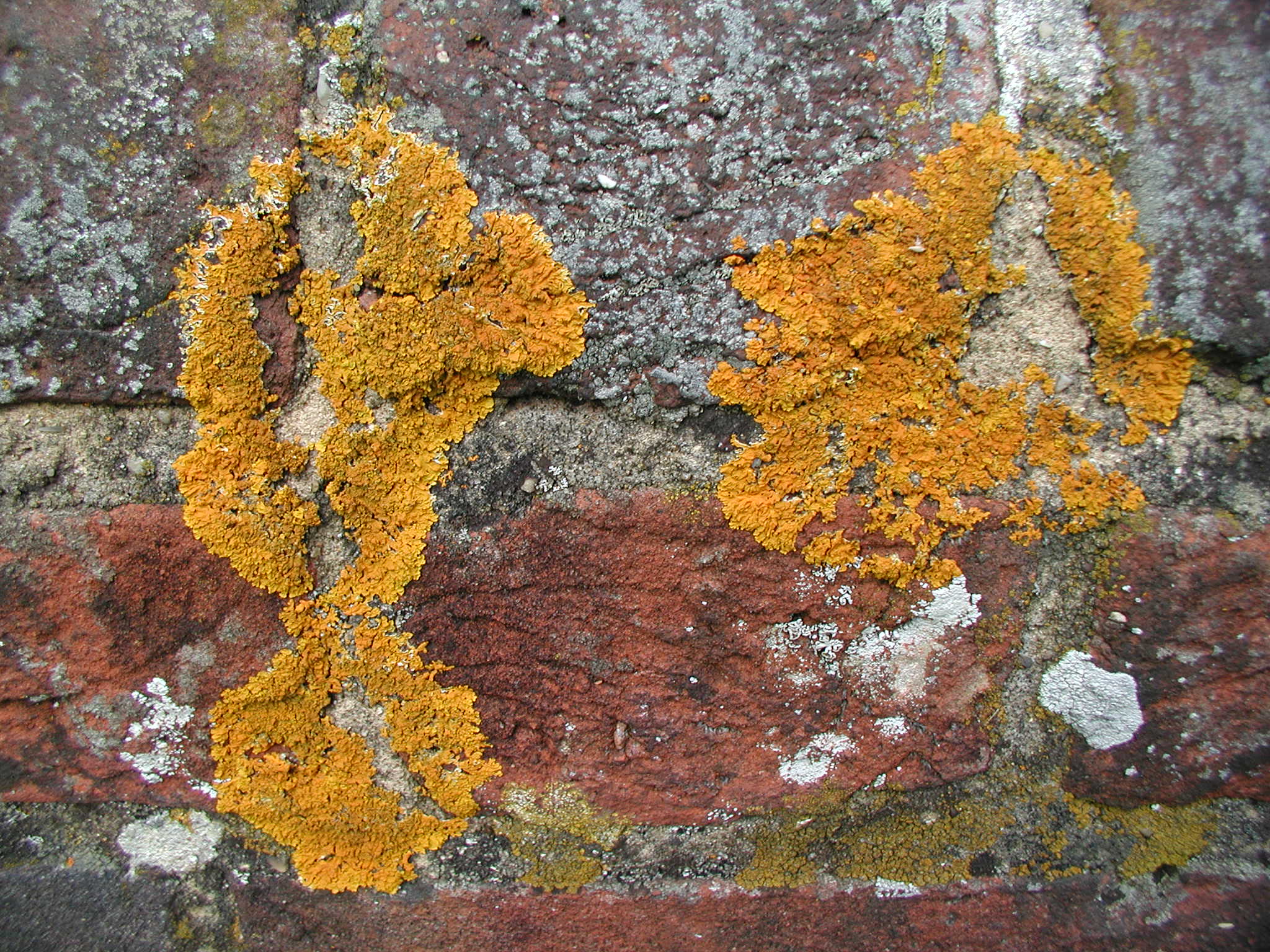|
Savoronala
''Savoronala'' is a fungal genus in the family Malmideaceae. It is monotypic, containing the single species ''Savoronala madagascariensis''. This lichen produces unique conidia (asexual spores) that each include a single algal cell. Taxonomy Both the genus and the specie were described as new in 2013 by Damian Ertz, Eberhard Fischer, Dorothee Killmann, Tahina Razafindrahaja, and Emmanuël Sérusiaux. The type (biology), type specimen was collected in Tôlanaro, Madagascar, in a coastal ''Erica (plant), Erica''-grassland. It was found growing on the stem of an ''Erica'' shrub. The lichen is known only from the type locality (biology), type locality. The area it was collected from is under pressure because of habitat destruction, charcoal production, and a nearby giant mine of ilmenite. Molecular phylogenetic analysis showed ''Savoronala'' be part of Malmideaceae, a family circumscription (taxonomy), circumscribed in 2011. Description Several features characterize the genus ''Sa ... [...More Info...] [...Related Items...] OR: [Wikipedia] [Google] [Baidu] |
Malmideaceae
Malmideaceae is a family of crustose and corticolous lichens in the order Lecanorales. It contains eight genera and about 70 species. Taxonomy Malmideaceae was created in 2011 to accommodate a group of species, formerly placed in genus '' Malcolmiella'' (family Pilocarpaceae), that molecular phylogenetics showed to be a distinct lineage and worthy of recognition at the family level. The genus ''Savoronala'', containing the single African species '' S. madagascariensis'', was added to the family in 2013, while another monotypic genus '' Kalbionora'' was added in 2017. Description Malmideaceae is similar to Pilocarpaceae, but can be distinguished from that family by thallus organization and ascus structure. ''Malmidea'' species have a thallus made of goniocysts–spherical aggregations of photobiont cells surrounded by short-celled hyphae. This characteristic is quite rare in the Pilocarpaceae, only found in the monotypic genera '' Calopadiopsis'' and '' Pseudocalopadia''. ... [...More Info...] [...Related Items...] OR: [Wikipedia] [Google] [Baidu] |
Emmanuël Sérusiaux
Emmanuël Sérusiaux (born 3 October 1953) is a Belgian lichenologist. His career, spanning more than four decades, has combined both lichenology research and political aspects of nature conservation. He spent several periods working as a researcher at the National Fund for Scientific Research and the University of Liège, the latter in which he accepted a faculty position as professor and head of the Plant Taxonomy and Conservation Biology unit. Sérusiaux also served for three non-consecutive appointments as Deputy Chief of Staff in the Government of Wallonia. He retired from both his academic and political positions in 2019. Sérusiaux published several phylogenies of lichen genera and described more than 200 new species, 20 genera, and the family Lepidostromataceae. This information was conveyed through his 145 authored or co-authored scientific publications from the period 1976 to 2020. He has had a strong research interest in the systematics of lichens that grow on le ... [...More Info...] [...Related Items...] OR: [Wikipedia] [Google] [Baidu] |
Thallus
Thallus (: thalli), from Latinized Greek (), meaning "a green shoot" or "twig", is the vegetative tissue of some organisms in diverse groups such as algae, fungi, some liverworts, lichens, and the Myxogastria. A thallus usually names the entire body of a multicellular non-moving organism in which there is no organization of the tissues into organs. Many of these organisms were previously known as the thallophytes, a polyphyletic group of distantly related organisms. An organism or structure resembling a thallus is called thalloid, thalloidal, thalliform, thalline, or thallose. Even though thalli do not have organized and distinct parts ( leaves, roots, and stems) as do the vascular plants, they may have analogous structures that resemble their vascular "equivalents". The analogous structures have similar function or macroscopic structure, but different microscopic structure; for example, no thallus has vascular tissue. In exceptional cases such as the Lemnoideae, where th ... [...More Info...] [...Related Items...] OR: [Wikipedia] [Google] [Baidu] |
Lichen Genera
A lichen ( , ) is a hybrid colony (biology), colony of algae or cyanobacteria living symbiotically among hypha, filaments of multiple fungus species, along with yeasts and bacteria embedded in the cortex or "skin", in a mutualism (biology), mutualistic relationship.Introduction to Lichens – An Alliance between Kingdoms . University of California Museum of Paleontology. . Lichens are the lifeform that first brought the term symbiosis (as ''Symbiotismus'') into biological context. Lichens have since been recognized as important actors in nutrient cycling and producers which many higher trophic feeders feed on, such as reindeer, gastropods, nematodes, mites, and springtails. Lichens have properties different from those of their component organisms. They come in man ... [...More Info...] [...Related Items...] OR: [Wikipedia] [Google] [Baidu] |
Monotypic Lecanorales Genera
In biology, a monotypic taxon is a taxonomic group (taxon) that contains only one immediately subordinate taxon. A monotypic species is one that does not include subspecies or smaller, infraspecific taxa. In the case of genera, the term "unispecific" or "monospecific" is sometimes preferred. In botanical nomenclature, a monotypic genus is a genus in the special case where a genus and a single species are simultaneously described. Theoretical implications Monotypic taxa present several important theoretical challenges in biological classification. One key issue is known as "Gregg's Paradox": if a single species is the only member of multiple hierarchical levels (for example, being the only species in its genus, which is the only genus in its family), then each level needs a distinct definition to maintain logical structure. Otherwise, the different taxonomic ranks become effectively identical, which creates problems for organizing biological diversity in a hierarchical system. ... [...More Info...] [...Related Items...] OR: [Wikipedia] [Google] [Baidu] |
Conidia
A conidium ( ; : conidia), sometimes termed an asexual chlamydospore or chlamydoconidium (: chlamydoconidia), is an asexual, non- motile spore of a fungus. The word ''conidium'' comes from the Ancient Greek word for dust, ('). They are also called mitospores due to the way they are generated through the cellular process of mitosis. They are produced exogenously. The two new haploid cells are genetically identical to the haploid parent, and can develop into new organisms if conditions are favorable, and serve in biological dispersal. Asexual reproduction in ascomycetes (the phylum Ascomycota) is by the formation of conidia, which are borne on specialized stalks called conidiophores. The morphology of these specialized conidiophores is often distinctive between species and, before the development of molecular techniques at the end of the 20th century, was widely used for identification of (''e.g.'' '' Metarhizium'') species. The terms microconidia and macroconidia are some ... [...More Info...] [...Related Items...] OR: [Wikipedia] [Google] [Baidu] |
Sporodochium
A sporodochium (pl. sporodochia) is a small, compact stroma (fungus), stroma (mass of hyphae) usually formed on host plants parasitism, parasitised by mitosporic fungus, fungi of the form Order (biology), order Tuberculariales (Deuteromycota, subdivision Deuteromycota, class Hyphomycetes). This stroma bears the conidiophores on which the asexual reproduction, asexual spores or conidium, conidia are formed. References Phytopathology {{botany-stub ... [...More Info...] [...Related Items...] OR: [Wikipedia] [Google] [Baidu] |
Stipe (mycology)
In mycology, a stipe () is the stem or stalk-like feature supporting the cap of a mushroom. Like all tissues of the mushroom other than the hymenium, the stipe is composed of sterile hyphal tissue. In many instances, however, the fertile hymenium extends down the stipe some distance. Fungi that have stipes are said to be stipitate. The evolutionary benefit of a stipe is generally considered to be in mediating spore dispersal. An elevated mushroom will more easily release its spores into wind currents or onto passing animals. Nevertheless, many mushrooms do not have stipes, including cup fungi, puffballs, earthstars, some polypores, jelly fungi, ergots, and smuts. It is often the case that features of the stipe are required to make a positive identification of a mushroom. Such distinguishing characters include: # the texture of the stipe (fibrous, brittle, chalky, leathery, firm, etc.) # whether it has remains of a partial veil (such as an annulus (ring) or cortina) or ... [...More Info...] [...Related Items...] OR: [Wikipedia] [Google] [Baidu] |
Chlorococcaceae
Chlorococcaceae is a family of green algae, in the order Chlamydomonadales. They are mostly soil-dwelling algae. Many members of this group produce lipids and secondary carotenoids. The Chlorococcaceae consists mostly of coccoid (single, nonmotile) cells with one parietal or central chloroplast and one or multiple nuclei. The chloroplast contains a single pyrenoid surrounded by a starch envelope. The cell envelope may thicken with age and develop into a mucilaginous stalk in some species. Reproduction consists of zoospores with a cell wall; after they stop swimming, the zoospores retain their shape. The family Chlorococcaceae is currently under taxonomic revision. As currently circumscribed, the type genus '' Chlorococcum'' is polyphyletic. The type species, '' Chlorococcum infusionum'', is a member of the clade ''Moewusinia''. List of genera * '' Apodochloris'' * '' Athroocystis'' * '' Axilococcus'' * '' Borodinellopsis'' * '' Chlorococcum'' * '' Chlorohippotes'' * '' Closte ... [...More Info...] [...Related Items...] OR: [Wikipedia] [Google] [Baidu] |
Photobiont
A lichen ( , ) is a hybrid colony of algae or cyanobacteria living symbiotically among filaments of multiple fungus species, along with yeasts and bacteria embedded in the cortex or "skin", in a mutualistic relationship.Introduction to Lichens – An Alliance between Kingdoms . University of California Museum of Paleontology. . Lichens are the lifeform that first brought the term symbiosis (as ''Symbiotismus'') into biological context. Lichens have since been recognized as important actors in and producers which many higher trophic feeders feed on, such as reindeer, gastropods, nematodes, mites, and springtails. Lich ... [...More Info...] [...Related Items...] OR: [Wikipedia] [Google] [Baidu] |
Crustose Lichen
Crustose lichens are lichens that form a crust which strongly adheres to the Substrate (biology), substrate (soil, rock, tree bark, etc.), making separation from the substrate impossible without destruction. The basic structure of crustose lichens consists of a cortex (botany), cortex layer, an algal layer, and a medulla. The upper cortex layer is differentiated and is usually pigmented. The algal layer lies beneath the cortex. The medulla fastens the lichen to the substrate and is made up of Fungus, fungal hyphae. The surface of crustose lichens is characterized by branching cracks that periodically close in response to climatic variations such as alternate wetting and drying regimes. Subtypes * Powdery – considered as the simplest subtype due to the absence of an organized thallus. :The thallus appears powdery. :E.g. Genera ''Lepraria'', ''Vezdaea'' * Endolithic – grows inside the rock, usually in interstitial spaces between mineral grains. The :upper cortex is usually d ... [...More Info...] [...Related Items...] OR: [Wikipedia] [Google] [Baidu] |





